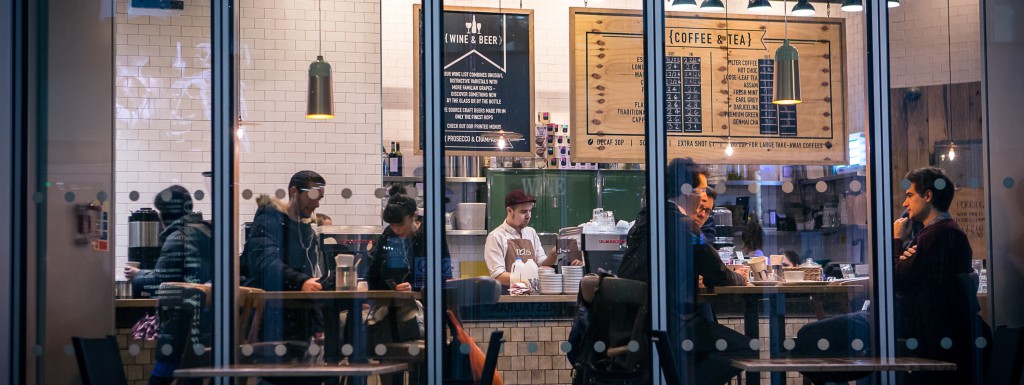
It’s almost four years since Mary Portas launched The Portas Review which looked at the future of the British high streets and why so many shops were no longer occupied. Just three years later in 2014, she followed up with a think piece that discussed the progress as well as her own ideas and recommendations for the future.
While it may seem as though our high streets and town centres are struggling for survival, across Europe certain outlets – like coffee shops – are thriving. In fact last year the European branded coffee shop market saw growth of almost 5%, bringing the estimated number of outlets to 15,626 in October 2014.1
The changing face of the high street remains a topic for discussion and Transforming the High Street was the theme of this year’s UK Coffee Leader Summit in London in February this year, discussing key learnings from the Allegra Project Café15 report and how despite the dominance of branded coffee shops, Europe is an advocate for artisan coffee shops.
In fact almost 80% of European branded coffee shops reported strong like-for-like growth in 2014 and we expect this positive trend to continue. As consumers’ knowledge increases, their desire for speciality coffee culture does too and despite price increases across Europe, coffee remains an affordable treat for many people, who refuse to give up their caffeine hit.
The Coffee Experience
Yet for consumers, it’s not just about having a high-quality cup of coffee. It’s the experience itself, whether it’s catching up with a friend or just having that initial interaction with a barista. In a world where much of our day is taken up with virtual interactions, screens and a lack of real contact, people seek out some normality by visiting a coffee shop and enjoying its atmosphere.
With the rise of online shopping resulting in decreased footfall to local shops, it is the few amenities that provide instant gratification or a service – such as a coffee shop or hairdresser – that continue to bring people to the high street and are helping to keep our town centres in business.
If people are visiting a town centre to do some shopping, they may take a break in a local coffee shop to refuel before returning to the shops, thus spending more money. This increased dwell time and footfall can actually boost a local high street economy by as much as 4%; for any kind of shop – coffee or otherwise – being in an area with high footfall is key to a successful business.
According to Deloitte, almost 40% of people visit their local high street daily and research from Allegra Strategies shows that almost 20% of people visit a coffee shop more than once a week. This shows that coffee shops are often a focal point of a high street or town centre, offering people a welcoming place to meet, socialise or relax.
As long as European coffee shops continue to innovate and develop, so will consumers’ desire for speciality coffee and as the economy recovers, we expect further growth, which will not only boost the coffee industry itself, but also the retail market.
The topic for discussion at the Symposium this year is Growth: Strategies for Accelerating Profit – click here for more information.
1 Source: Allegra Strategies, Project Café15 EU Report
Data cannot be reproduced without permission.

Submit a comment
Your email address will not be published. Required fields are marked *
There are 0 comments